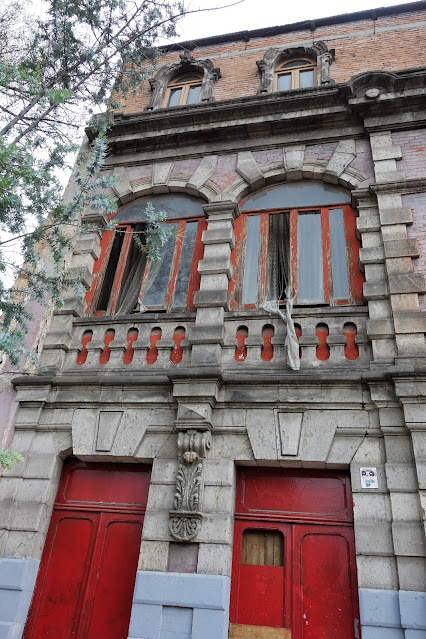Mexico City is filled with architectural gems that span the centuries. Many buildings were built during the "Porfiriato", the period in the late 19th and early 20th centuries when Mexico was ruled by the dictator Porfirio Díaz. During that period the upper classes embraced the styles of France, so the architecture has a decidedly European flavor.
As I was walking down Chaputepec Avenue I saw numerous examples of architecture from the "Porfiriato", some in better condition than others.
From the ragged curtains hangining out the windows, I would say that this once elegant house has seen better days.
Technically, this building, built right after the revolution that ousted Porfirio Díaz, would be "post-Porfiriato". It is a large housing complex that occupies an entire city block. I wrote about it once before on this blog. I was happy to see that it appears to have been recently spruced up and that all graffiti has been removed.
This fine old building is still an elementary school. The "Escuela Primaria Horacio Mann" is named after Horace Mann, the famous 19th century educator from the U.S.
Heading across Chapultepec Avenue into the neighborhood of Roma, the beautiful old buildings are generally in better condition. Roma began as an affluent development during the "Porfiriato", but then fell into decline as the wealthy moved to newer neighborhoods. The 21st century has seen a revival of the district, and it is considered one of Mexico City's trendiest "colonias".
I took this photo through the gate which closes off this private lane of townhouses.
An early example of a gated community?
These two houses, next door to each other, are especially ornate examples of what I think would be classified as examples the French "art nouveau" style. The blue one is for sale or rent.
Not everything in Roma is elegant "Porfiriato" architecture. Just down the street is the startling contrast of this late 20th century apartment building.

















No comments:
Post a Comment